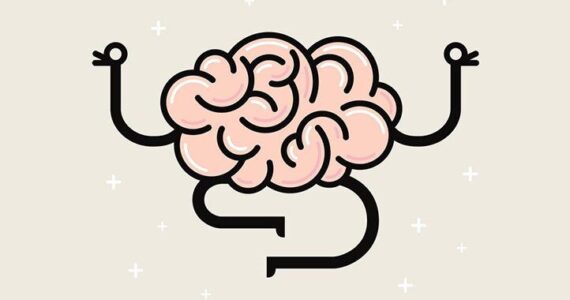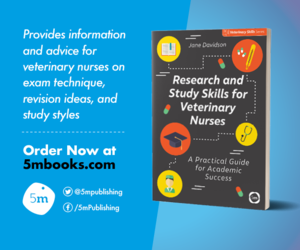
Staying mindful in a pandemic
What can we learn from our patients and our pets during the pandemic?
Have you noticed how so many people have got a new puppy, a kitten, or a pair of guinea pigs since the pandemic started? While this raises many questions about morals and ethics, it also shows how the human-animal bond can be a lifeline during difficult times.
Looking at the ever-increasing number of puppy-poodle crosses among my friends and coming through the door at work, I can be either judgemental about pet breeding, grumpy about the fact that work is busier than ever and I’m suffocating behind this mask-visor combo, or I can choose to celebrate the human-animal bond which has helped me as a pet owner and many others to cope with potentially overwhelming emotions related to the pandemic. It’s a choice.
During mindfulness meditations, we can consciously train our brain to notice things, such as how a puppy has brought joy to a locked-down family, how the lack of traffic noise gives us a chance to hear more birdsongs than ever, or how concentrating on a good coffee makes its aroma, taste, and temperature so much more prominent than normal.
You can choose to rejoice in the good things about increasing pet ownership while also being aware of the drawbacks. It is about noticing both, and then choosing which one has the most influence on you. I can see how pets can have a profoundly positive effect on us during difficult times. With that in mind, what can we learn from our patients and our pets?
The importance of a good routine
When we were kids, most of us had routines provided for us. We had a wake-up time, school time, dinner time, and bedtime. These routines kept us on a productive path.
The pandemic has caused us to have amounts of time to fill that we probably aren’t used to having.
The pandemic has caused us to have amounts of time to fill that we probably aren’t used to having. And yet, for a lot of it, we are running on autopilot like news-jaded zombies. At the other extreme are very productive people learning new jam-making skills while teaching their kids to crochet their own wall hangings in five different languages. But this is a global pandemic, not a productivity contest. Somewhere in the middle are the dogs and cats: super chilled bundles of joy who love a routine of walkies – food – nap – repeat.
We can learn from our pets in many ways, and one way is by having an easy routine to add a bit of structure to the days when our default mode is to doom scroll endlessly through the news and social media. A simple routine (eg mindful meditation – mindful shower – slow coffee) can bring some normality to an incredibly abnormal situation.
Feel what I need to feel when I need to feel it
This pandemic is impacting more than just our physical health, it is taxing our mental health as well. Fear is at an extremely high level. The non-stop media coverage and prolonged uncertainty can lead to intense feelings of stress, anxiety, and depression. Now more than ever, it’s essential for us to create awareness of our feelings and to learn to manage them. With animals it’s easy: hunger, eat, done. Separation anxiety, owner returns, done. We, however, need to put a lot more effort into “notice, feel, let go” of difficult emotions.
We need to take time out to sit, breathe, and allow ourselves to feel what we feel. It’s hard to know what we’re feeling when it’s jumbled up in our minds like a bundle of intertwined wires behind the TV. The very simple act of untangling those wires and sorting them out is so satisfying. As is the act of identifying our feelings, one at a time, and giving each one a name. By naming them, we are identifying each feeling and allowing ourselves to feel it. It’s not weak to feel overwhelmed. It’s not selfish to feel sad when others may be worse off. It’s not shameful to feel joy mid pandemic. Feeling overwhelmed doesn’t stop you from feeling happy to stroke the guinea pigs, play with the kittens or walk the dog.
You are allowed to feel all of those emotions. You need to give yourself permission to feel each of those feelings, all the while recognizing each individual feeling and emotion separately, rather than as a plethora of intertwined emotions causing anxiety.
How to truly be present
Just as animals can teach us to let go of difficult emotions, they can also show us how to be truly present. What dog is yearning for life to return to the way it was pre-COVID while they’re out for a walk? The simplicity of their minds allows them to notice the present moment wholeheartedly.
When times are hard, it’s impossible to be anywhere else other than totally consumed in the moment of awful grief and desolation. So, when times are pleasant enough, or even really gorgeous, why does it take such effort to remain in that moment and glean all the happiness possible out of it to provide future resilience? It just does. Because we have hard-wired ourselves to ignore things that don’t need “fixing”. It takes training to change. It takes practice. And it’s so incredibly rewarding.
So, if we are going to achieve anything during this pandemic, maybe it could be to (1) develop a simple routine; (2) allow ourselves the time to feel what we feel, and (3) be totally present in the moment we’re in. Because the past has passed and cannot be changed or undone, and the future is overwhelmingly uncertain.

Comments are closed